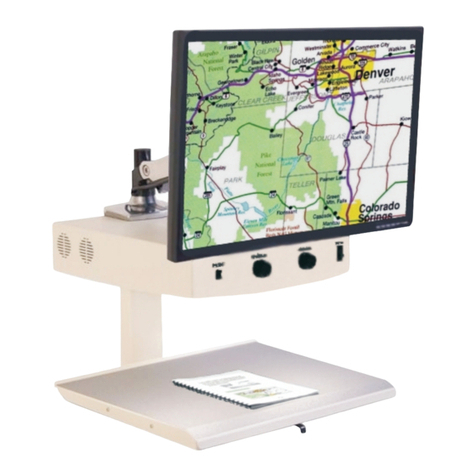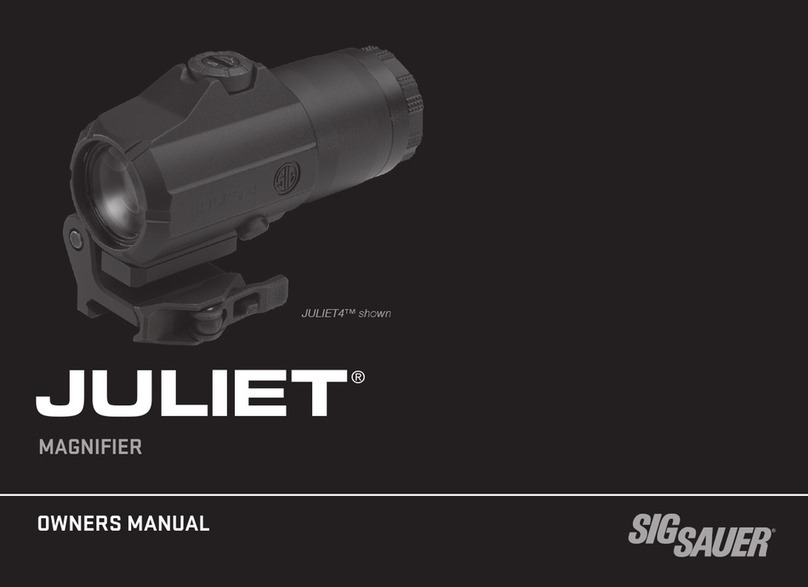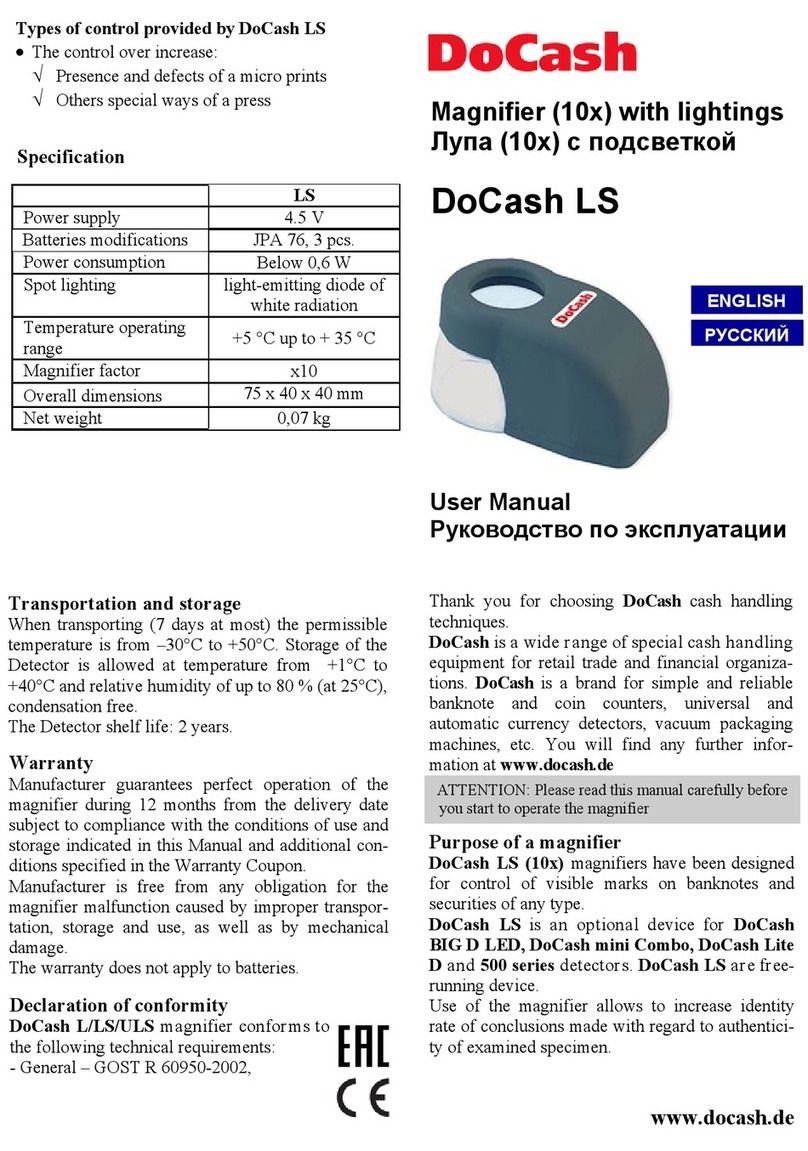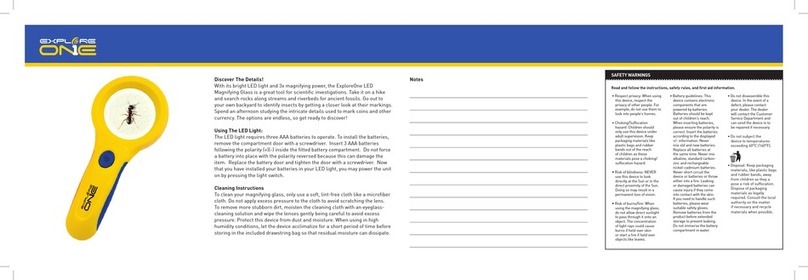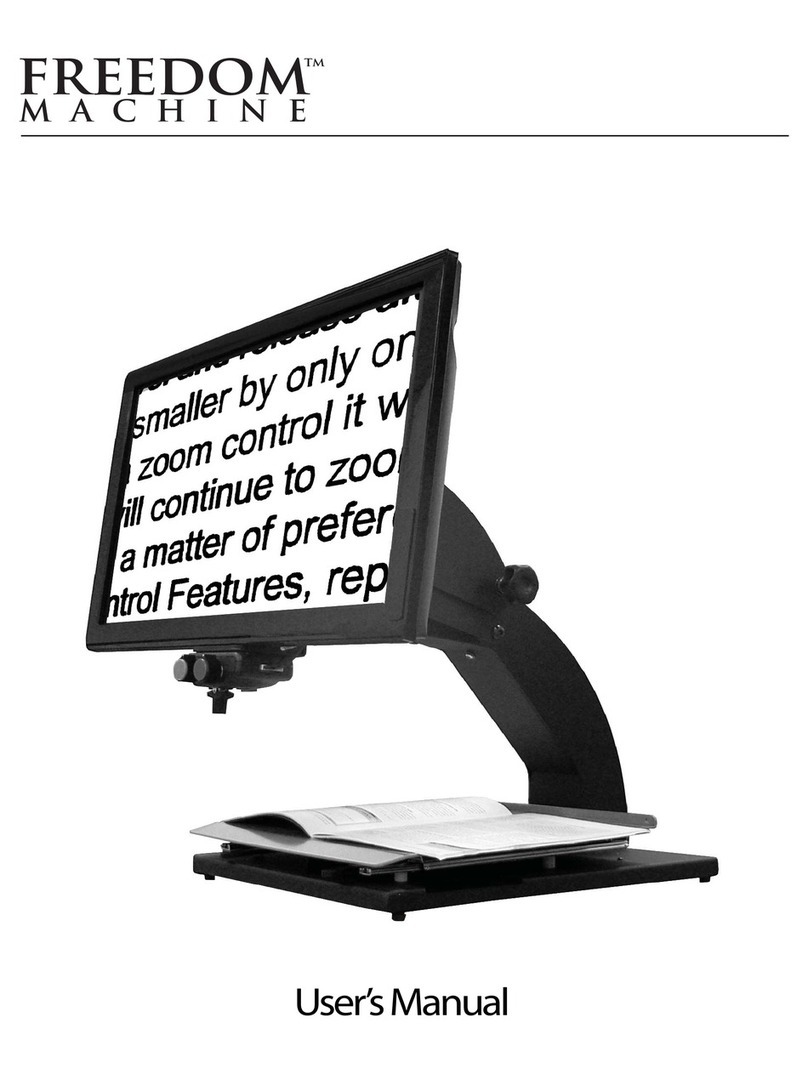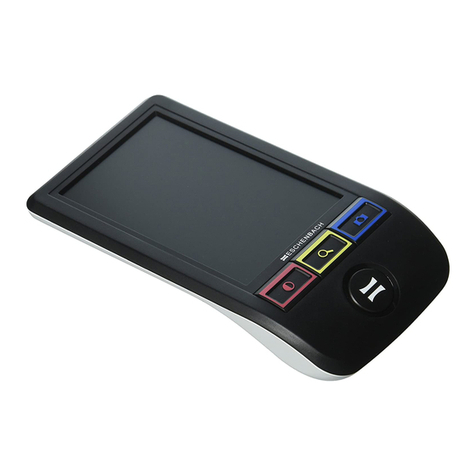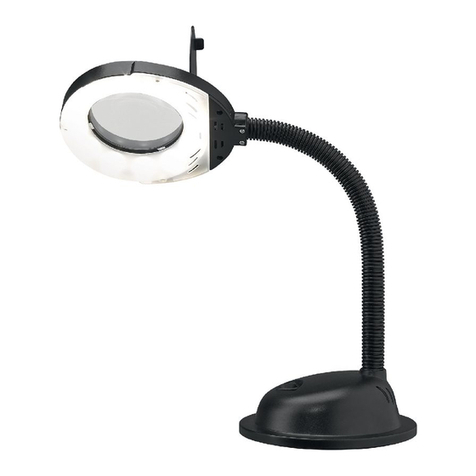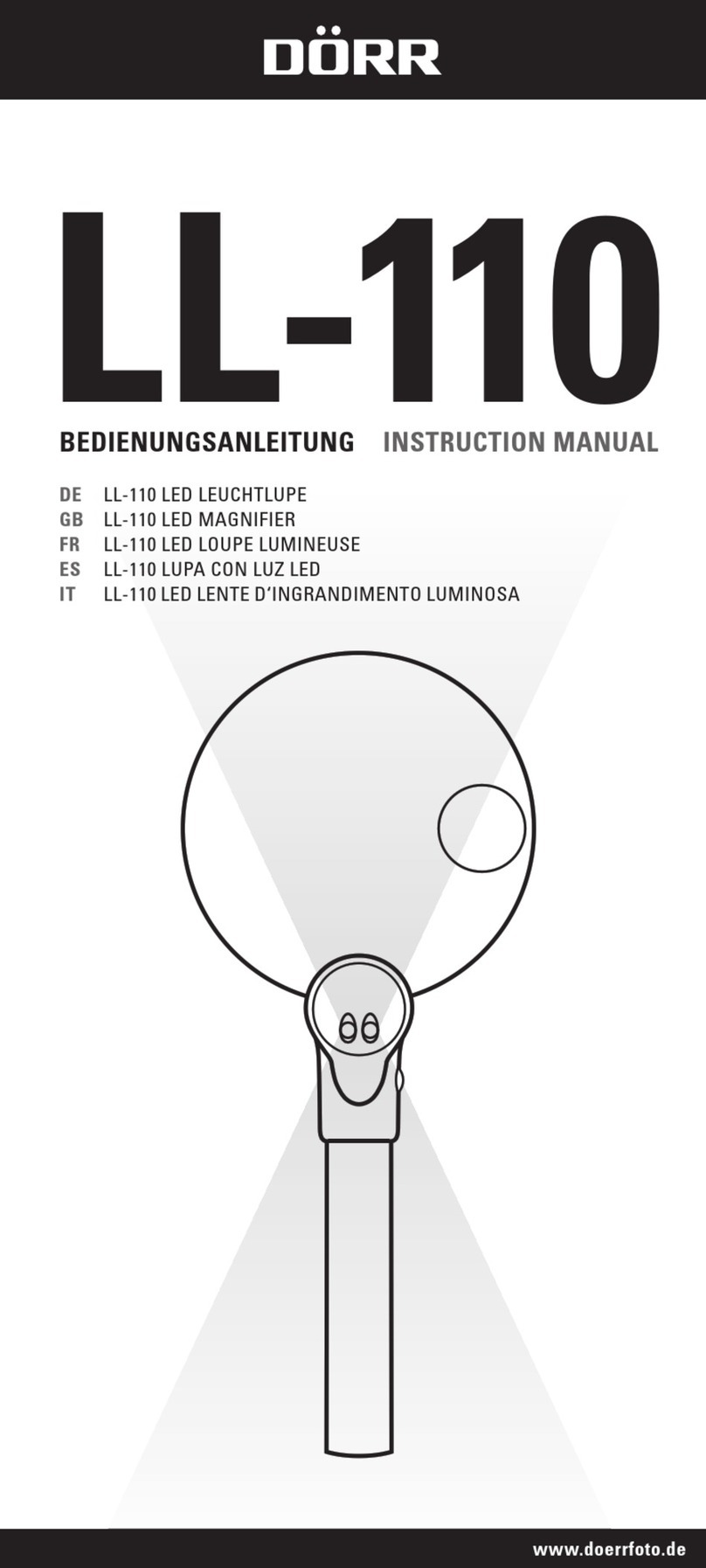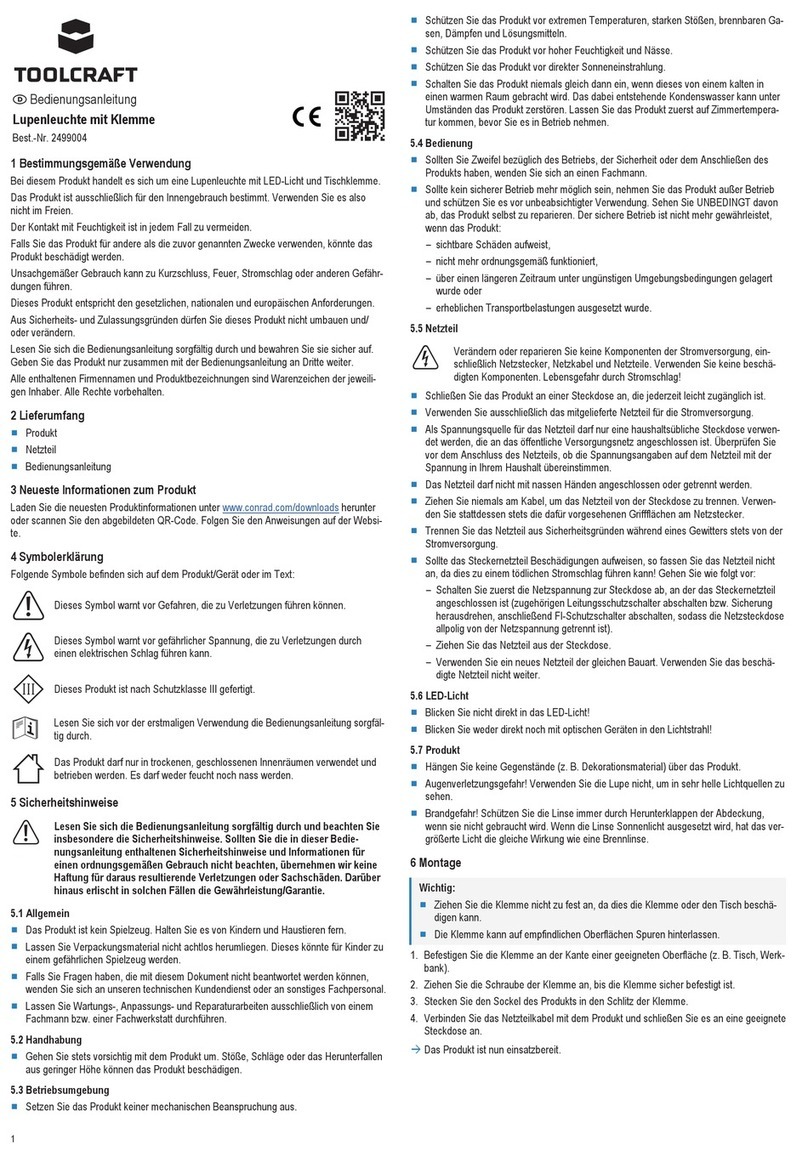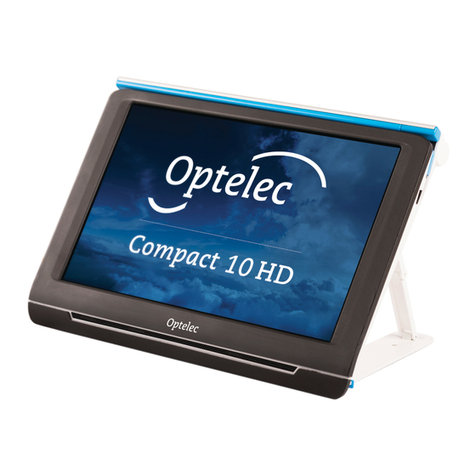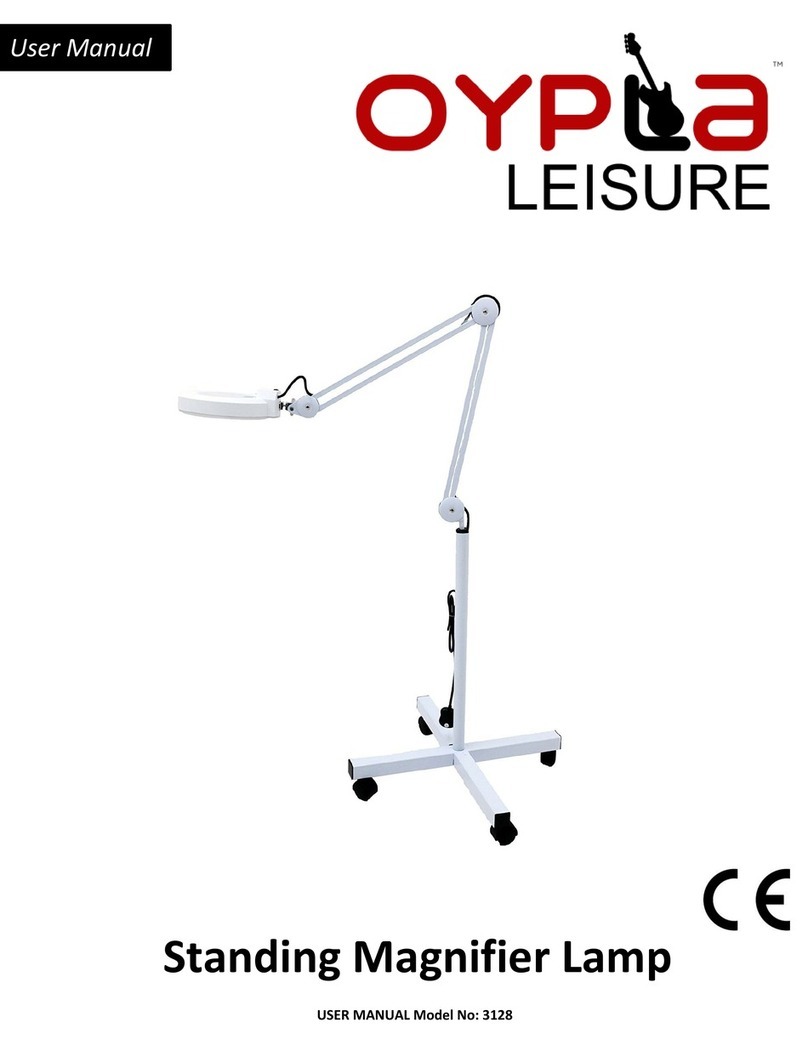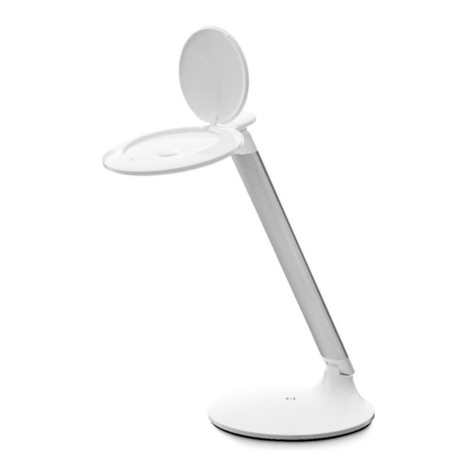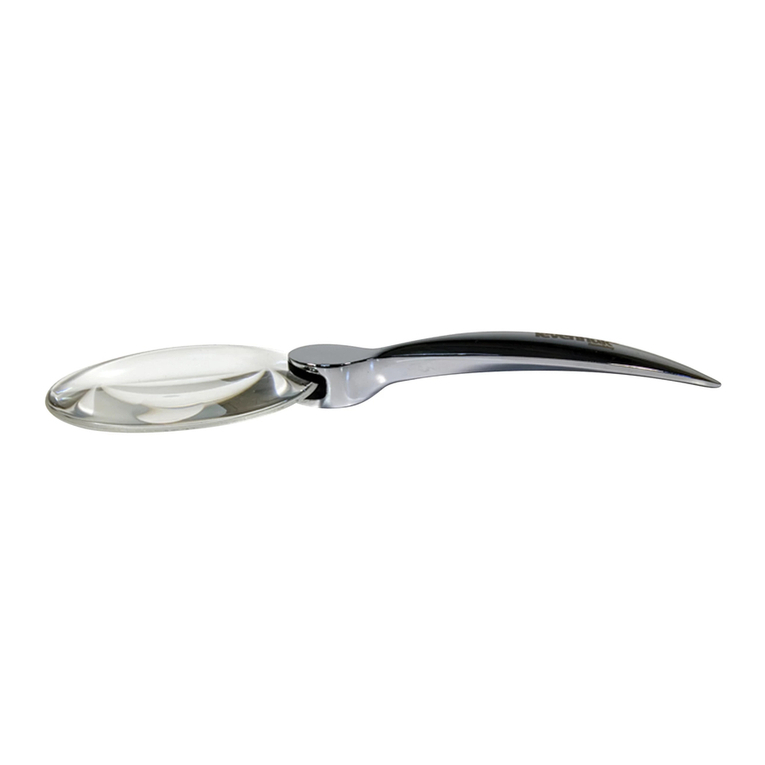Lion Optics Inspector M2 User manual

Inspector M2
Manual
Innovative optical solutions

DANGER —Ultraviolet radiation emitted from this product.
Avoid exposure. Never look directly into the lamp. Exposure can cause
eye and skin allergy and allergic reactions.
Medications or cosmetics may increase your sensitivity to ultraviolet
radiation.
If you are using medications or have a history of skin problems or believe
yourself especially sensitive to sunlight
Use safety glasses and cover skin areas.

- 1 -
Package contents
Inspector Loupe
2 lens caps
Traveling case with foam inlay
USB loading cable (standard micro-USB)
Wrist strap
Manual

- 2 -
The Inspector M2
The Inspector M2 is equipped with two adjustable polarisers that
allow modification or elimination of reflected light. To maximise its
performance, the loupe also features a UV light and a doublet eye-
loupe. Its fully rechargeable battery allows for cordless operation both
in- and outdoors.
1.
2.
3.
4.
5.
6.
7.
8.
9.
10.
11.
12.
13.
Magnifier + 2
Eye-loupe +10
On/off switch
Battery charging indication
Button Polariser LED emitter
Button UV LED emitter
Eye-loupe illuminator
Adjustable polariser (analyser)
UV LED emitter
Adjustable polariser
Eye-loupe LED emitter
Wooden grip
Wrist strap

- 3 -

- 4 -
The Inspector M2 is a versatile loupe designed to be used to
inspect a wide range of materials in the field of art, antiques and
artefacts.
Lion Optics worked in collaboration with art dealers, museums
and restoration specialists to adapt this tool to their specific needs.
After many hours of testing on real examples in the field, Lion Optics
has been able to exactly tailor the Inspector M2 to reach a perfect
output of polarised and UV light. This combination allows a perfect
scan of a large scope of artworks and give a better understanding of
their conditions.
Other variables will have an effect on what you can see using the
crossed polarised function of the device.
We are still discovering that the Inspector can provide better
vision on a new range of materials.
1. Polariser function
Many light sources - including the sun - emit a large number of
photons of light that are oriented in all directions. These photons are a
mixture of lightwaves, travelling in all possible transverse directions.
When light waves hit a reflective surface, the light reflected
becomes polarised. This reflection is a lightwave travelling in one
direction.
A polariser can filter this reflected polarised light by absorbing or
reducing the glare reflected from a shiny surface, such as varnish on a
painting, for example. This allows the natural colour and detail of the
subsurface to appear.
The Inspector’s polarised light penetrates deeper in the surface of
different materials, while non-polarised light provides information
about the superficial surface layer. The M2 allows the user to get
more information about the specimen by toggling between the two
polariser modes.

- 5 -
Using the Inspector M2 polariser function with paintings
A painting consists of various layers: the white base, the paint
pigments and the varnish. The varnish reflects more light than the
pigments underneath, which significantly interferes with the light
reflected by the pigments. Likewise, when examining thin sections of
paintings destroyed by over-cleaning, the white of the base layer will
reflect more light than the paint pigments. The M2 can reduce those
highly polarised reflections to allow the unpolarised rays reflected by
the pigments to be revealed.

- 6 -
The Inspector M2 features:
One Polariser filter:
This filter can be manually rotated and is placed in front of the
strong led illuminator. Consequently, it only allows light waves
vibrating along their polarising axis to completely pass through, while
absorbing light waves that move in other directions.
One Analyser:
This additional large polariser is placed underneath the magnifier
and allows to see through. The object observed lies in the light path
between the two filters.
When the two polarisers are crossed, very little reflective light
passes through the loupe. However, you can always adjust the
amount of light waves during inspection by rotating one of the
polarisers.
The Inspector M2 offers more contrast, true colours and
eliminates reflections on most materials.

- 7 -
How to use your polarizer function
Hold the magnifier directly above the object you would like to
examine. The focal length is approximately 20 cm from the object. The
ideal distance to the eyes is about the same but adjust to your own
preferences. For best conditions, the amount of ambient light should
be dimmed so as to not to overpower the polarised light. Complete
darkness is not necessary but this would give the best results. By
slowly rotating the ring of one of the polarisers the reflections will
disappear to reveal the true nature of the specimen.
Polarised light is completely harmless to artwork or delicate
materials.
2. Eye Loupe
This doublet lens is the third function and allows the user to
examine materials or small objects at a very close distance to the eye,
making the object appear larger and revealing details not perceivable
by the naked eye.
How to use the eye-loupe function
The best way to use
this function is to hold the
small magnifier as close to
the eye as possible while
bringing the subject closer
to the lens until it comes
into focus. Press the
button in the middle to
illuminate the object you
want to examine through
the eye loupe.

- 8 -
3. UV light
The ultraviolet emitter is essential when evaluating artwork for
their condition and age. The UV led emits an ultraviolet light wave of
365 nanometers. At this wavelength, many materials absorb invisible
ultraviolet energy and transform this energy into visible coloured light,
easily distinguished by the human eye. This makes the ultraviolet light
an especially useful instrument when checking the condition of any
kind of artwork. Prior restorations can easily be detected.
How to use your UV light function
In a darkened environment, ultraviolet light reveals alterations
such as layers of paint, repairs and floating signatures on artwork that
are normally invisible in daylight. The slightest alteration will stand out
with extreme clarity under UV light.
UV light can be dangerous to your eyes and skin if not taken
seriously. Do not look directly into UV light during operation. Exposure
to UV light can cause severe eye damage to humans and animals.
For safety reasons, it takes one second for the UV light to reach full
intensity.
Detecting restorations and alterations.

Detecting active rust.
Increased contrast.
Revealing unreadable inscriptions.
Increased contrasts show true colors.
Detecting encrustations and patina on bronze.
Encrustations and impurities on ancient gold.
- 9 -

- 10 -
Technical Specifications:
Weight: 465gr
Size: 250x90x55mm
Size Casing: 320x220x70mm
Lenses: 27mm + 10D doublet glass lens
77mm magnifying lens + 2
77mm polariser glass filter
27mm polariser glass filter
18mm doublet glass lens
LED emitters: White (4000), 4W
UV 365nm,
White (soft)
Frame: Milled aluminium parts.
Anodized, and lacquered in transparent varnish
Grip: Oiled Pau Ferro hard wood
Battery: Build in 18650 Li-Ion 3,7V, 2900 mAh,
Load/unload protected,
> 500 load cycles
Power system: Constant stabile voltage for all three LED emitters
(On-board multiple buck-boost converter)
Loading: Through USB micro cable, 5 hours at 500 mA (USB 3)
Fully charged when lights are green

- 11 -
Guarantee
5 years on LEDs and electronics.
2 years on battery
Contact
LION optics
Frederik Matthesstraat 30
2613ZZ Delft
The Netherlands
http://www.lionoptics.nl
General information
Technical support and information
Mail to : support@lionoptics.nl
Email reply within one (working) day

